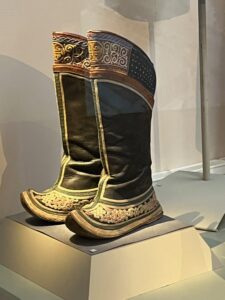
For those of you (there must be thousands!) who read my first Mongolia post and only wanted more, here you have it! Bonus points if you thought to yourself, “Yes, Keri, natural beauty abounds in Mongolia, but what about food and culture?”
Food
I was looking for dumplings upon arrival in Ulanbaatar. In 2004 I took a trip across Russia with my beloved boss and friend, Roger. One memorable stop was in Ulan-Ude, home of the oldest Tibetan monastery in Russia – as it was the only one that survived Stalin. While we worked there, we had a fantastic guide and host, whose name remains forever on the tip of my tongue. What I have not forgotten is the dumplings – poziy – he took us to find.
Ulan-Ude is very close to Mongolia and the folks there seem more like Mongolians than like Russians, at least culturally. So I knew this trip I was going to dumpling up. In Ulanbaatar, the dumplings are called buuz, and are not slurpy like the ones in Ulan-Ude, but still lovely. I had some that first night in the national park, and again elsewhere. But that is far from the only delicacy.
Khuushur are fried patties filled with beef, veggies, or cheese. As much as that might make you think of empanadas, Jamaican patties, Cornish pasties, or Italian panzerotti, they have a particular oniony flavor and soft but studded texture, and they were my favorite hand-held food of the trip, no matter their stuffing. There is also the famous Mongolian barbecue and Mongolian hotpot – where you cook your own food in boiling broth over a burner buried in your tabletop.
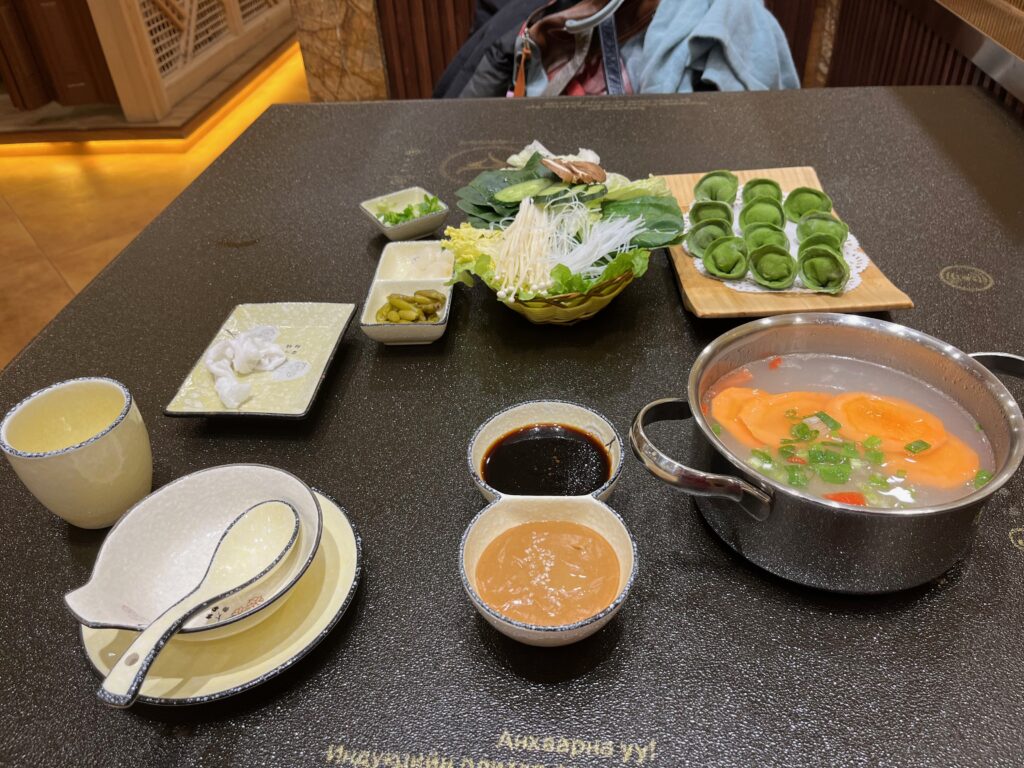
My other favorite was Tsuivan, with homemade noodles, beef and veggies. But the best way to try all of these in a ger. We got to do just that in an unforgettable restaurant that showcases, on the walls of its ger #2, year-on-year champions from its multi-sport competition (horse-racing, archery and wrestling). Our hosts let us in on a secret: the competitors started posing shirtless after a woman won the competition, to discourage women from entering!
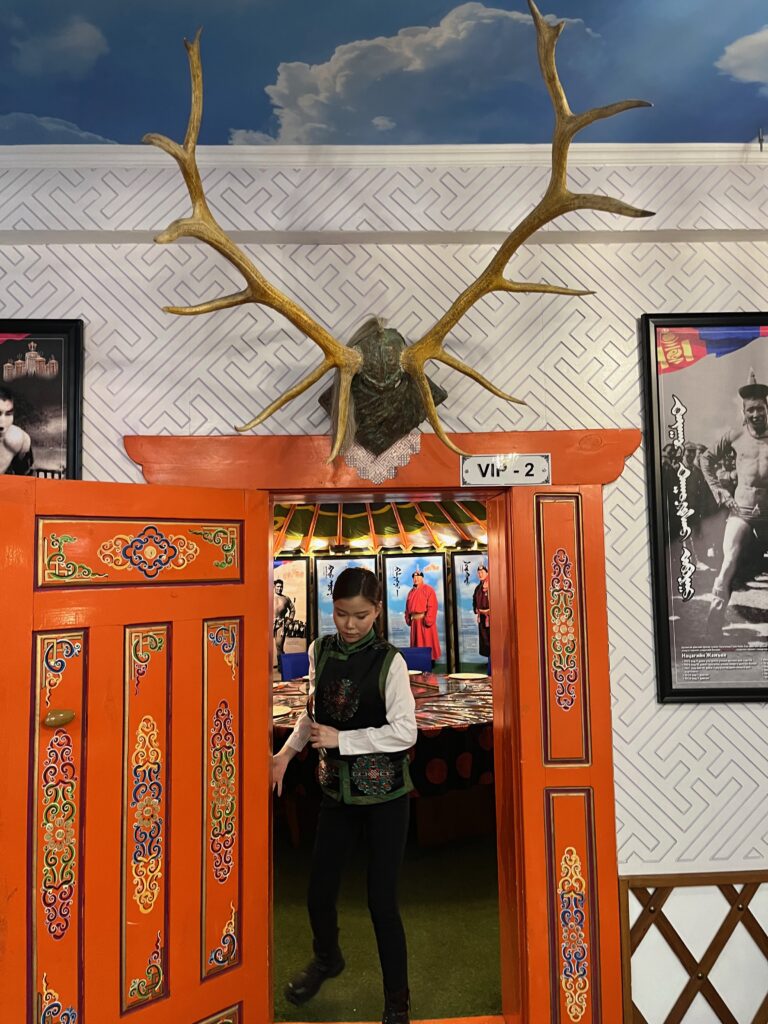

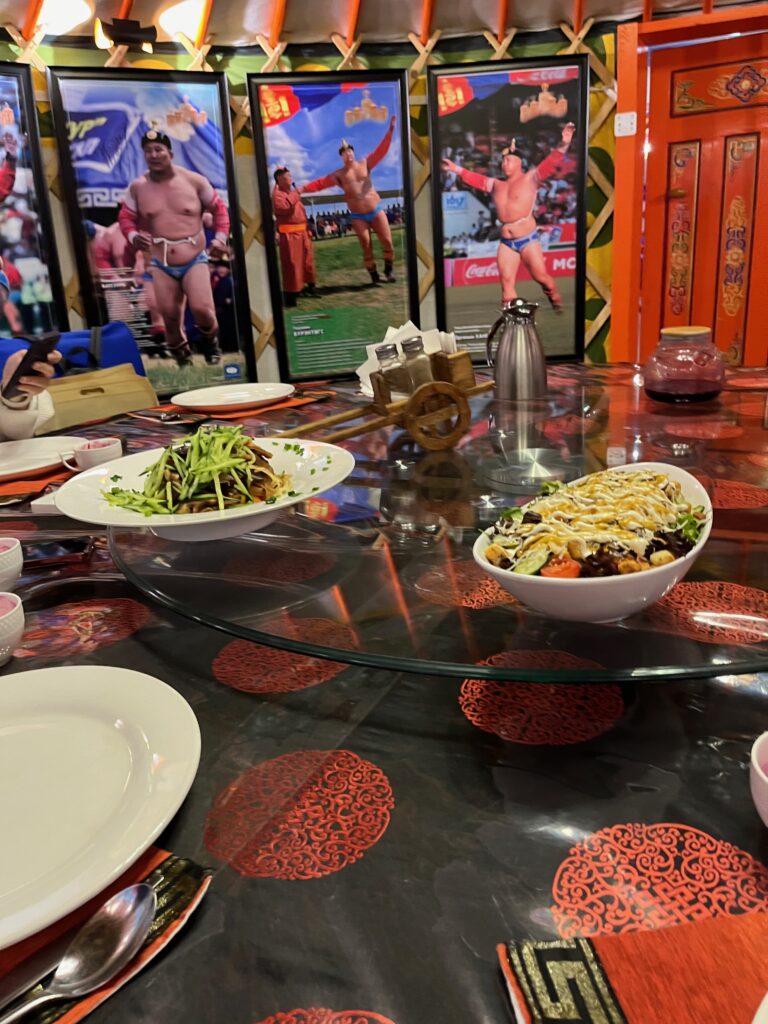
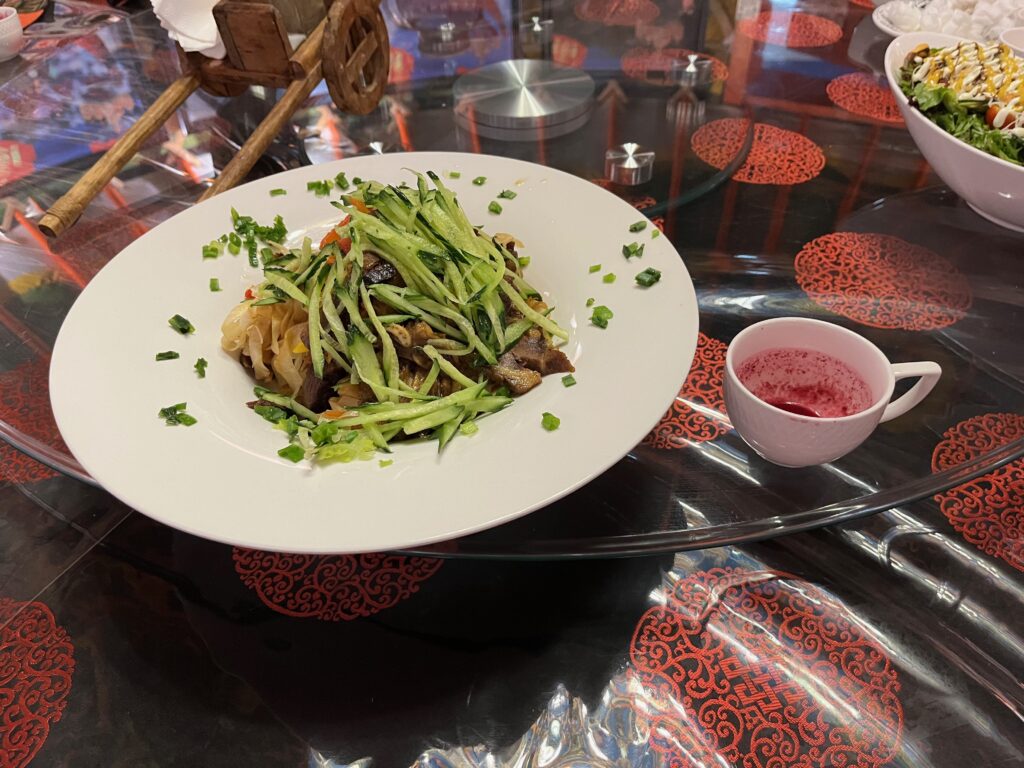
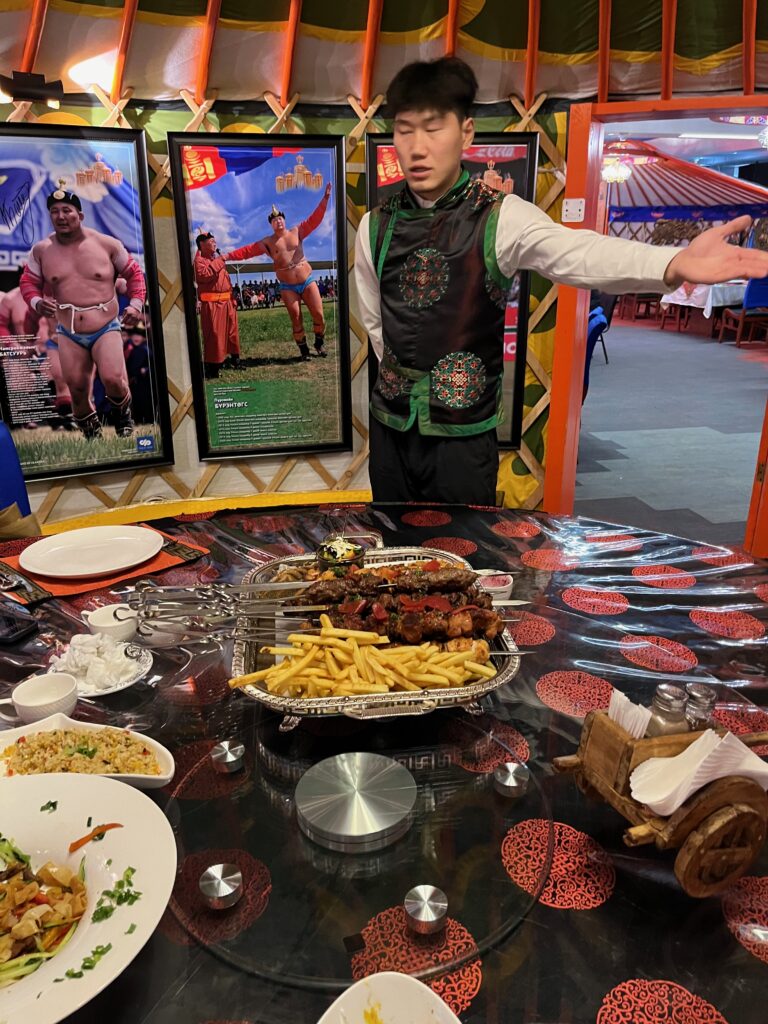
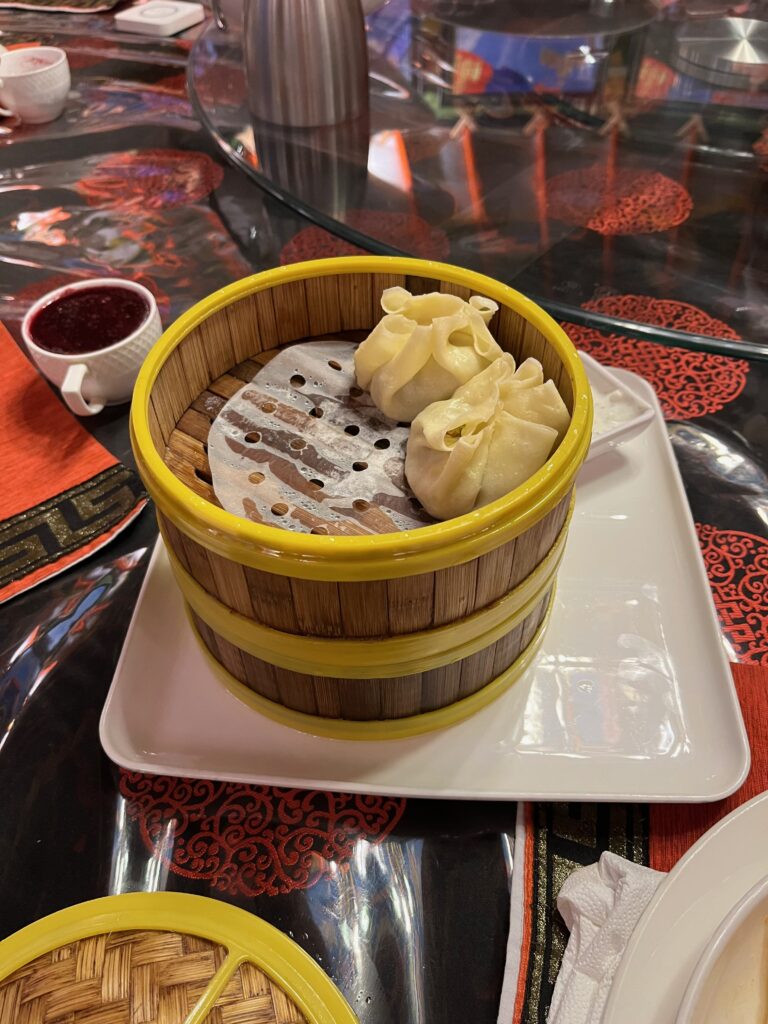
Somehow, I missed out on Boodog, Khorkhog, and Boortsog – well, that means I’ve saved something for my next visit.
Culture
You might be more familiar with the word yurt instead – I sure was – but ger is the term of art in Mongolia. There are gers clustered all along the highway in the national park I visited, and in summer guests can stay in them and experience ger life. You can also see one in the new Chinggis Khan Museum in Ulanbaatar, but that is actually the last exhibit and I haven’t even painted a picture for you yet of the massiveness of this six-story museum, or its sweep of history. Let’s start well before Chinggis Khan.
Horses have reigned supreme on the steppe. This was something I was definitely expecting to see, after reading and watching documentaries about the Mongolia Derby, in which horseriders recreate Chinggis Khan’s post office: 14 hours a day, for ten days, on feral ponies that are swapped out every 40 km. The museum shows how central horses were to life on every floor, in every time period. So much of the decorative art on display was for horses, even before it was for people. Caribou and elk and even some fanciful horse-dragon-type animals in various media are also on display.
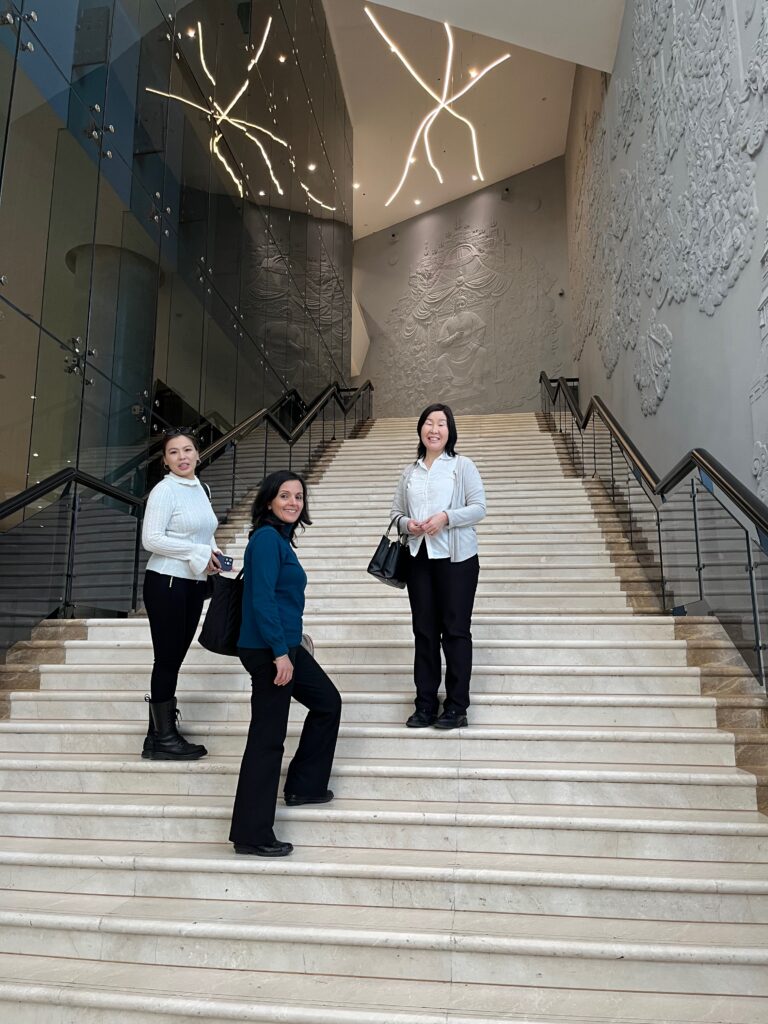
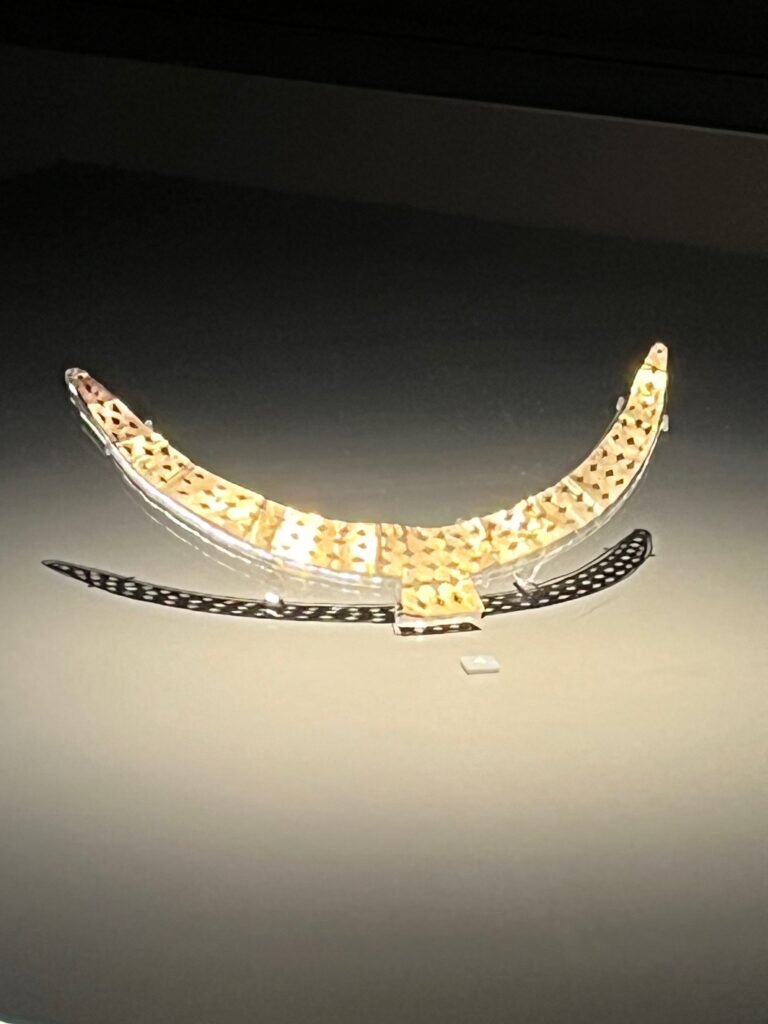
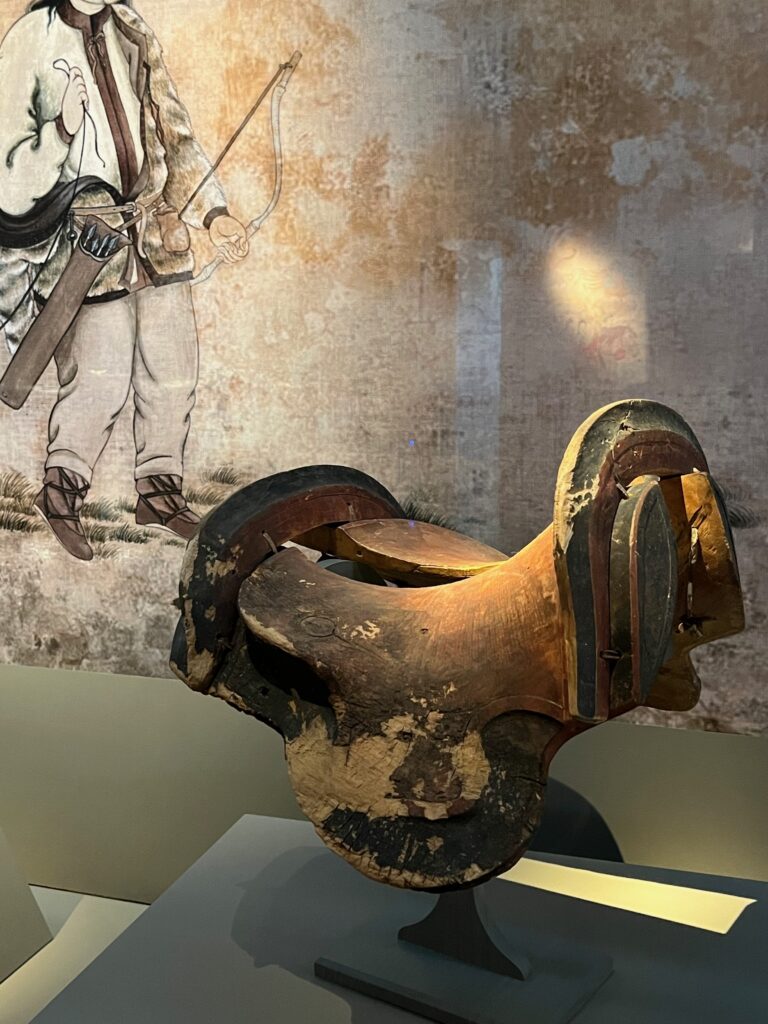
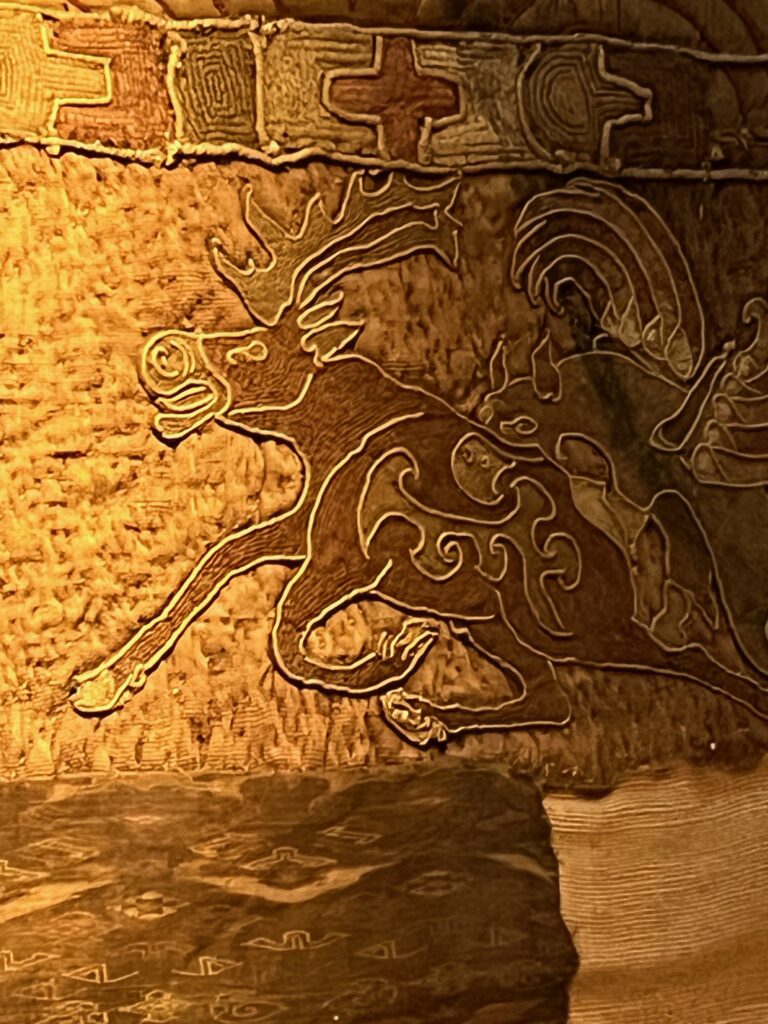
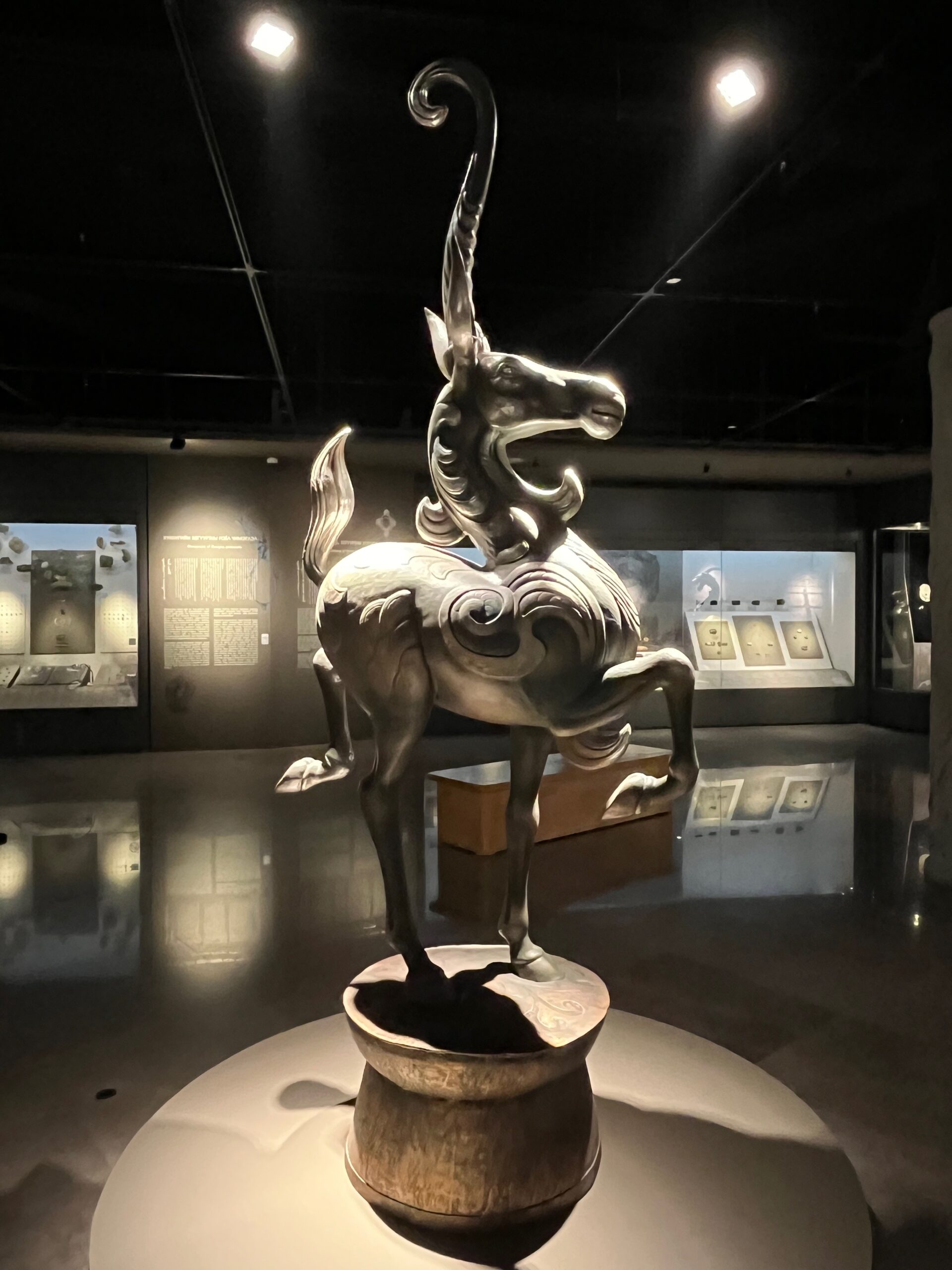
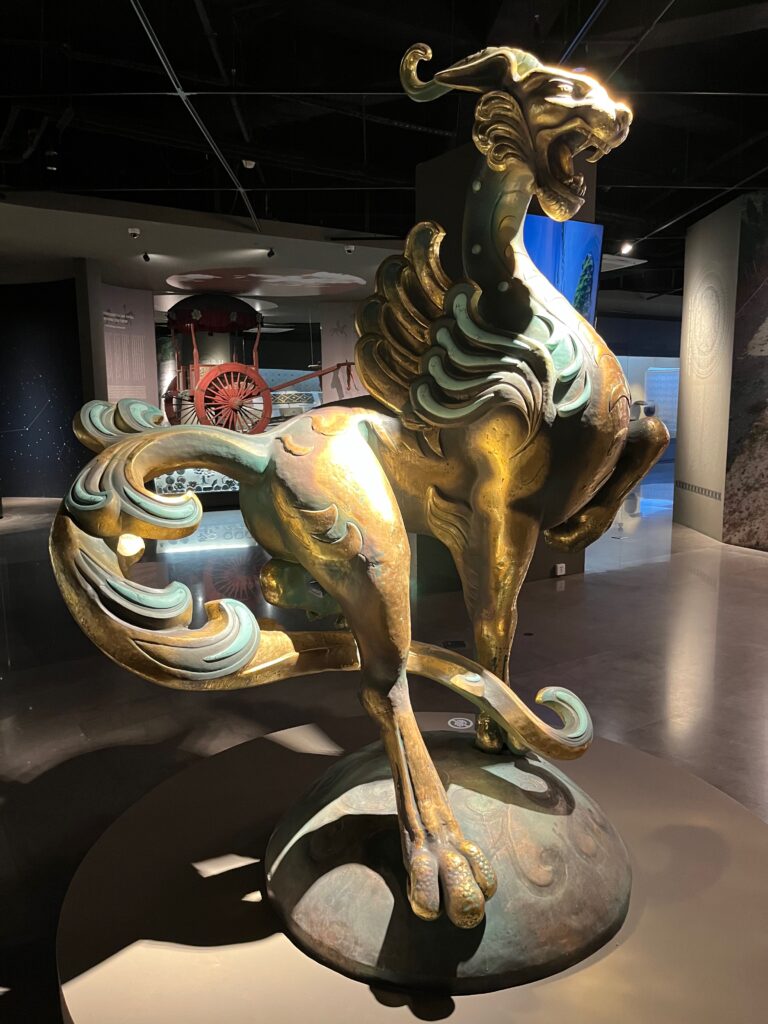
Treasures reserved more for humans – from elaborate clothes and hats (focusing on warmth!) to musical instruments to precious metal crowns, cups, coins and stamps. Also 1000 little Buddhas. I had been focused on the Soviet satellite years, and the use of the Cyrillic alphabet, but what was so striking in the museum was that Mongolia is so close to China and so embroiled over centuries in Chinese dynasties and politics, and that Mongolian cultural artifacts are much more Asian than they are Russian.
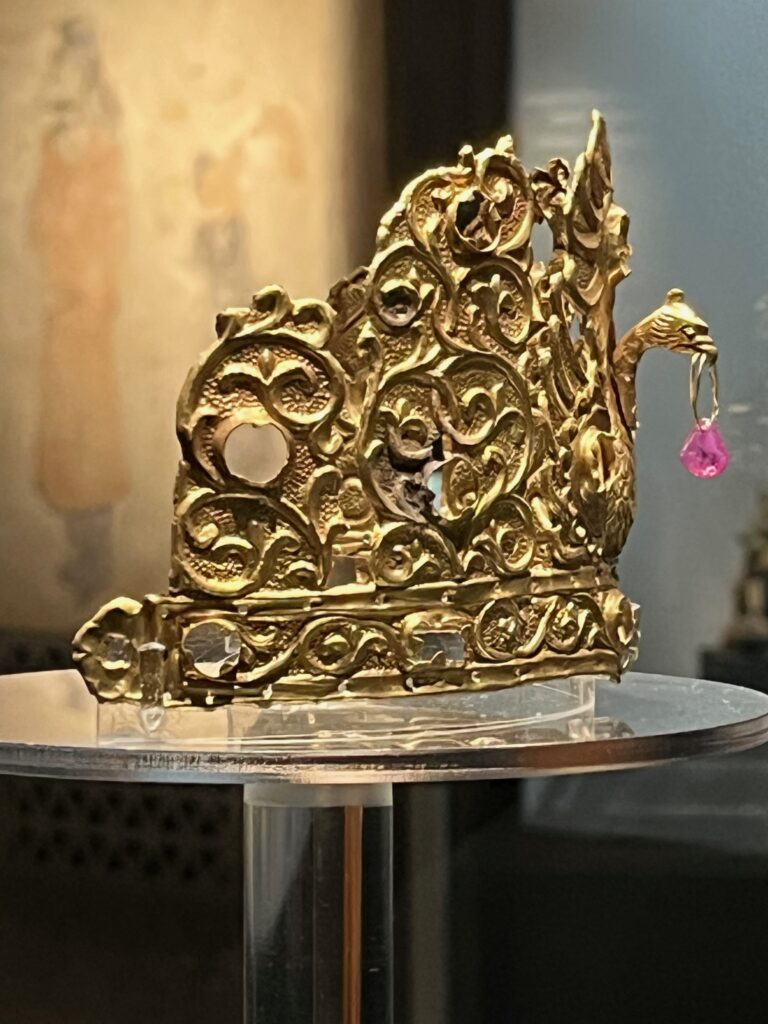
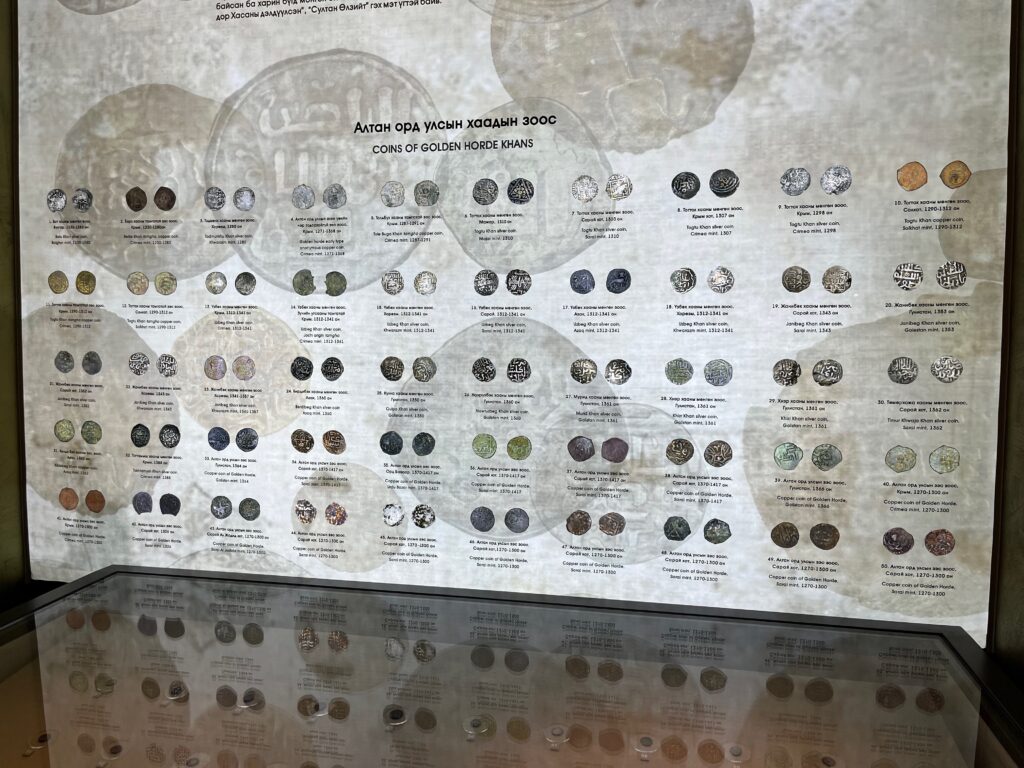
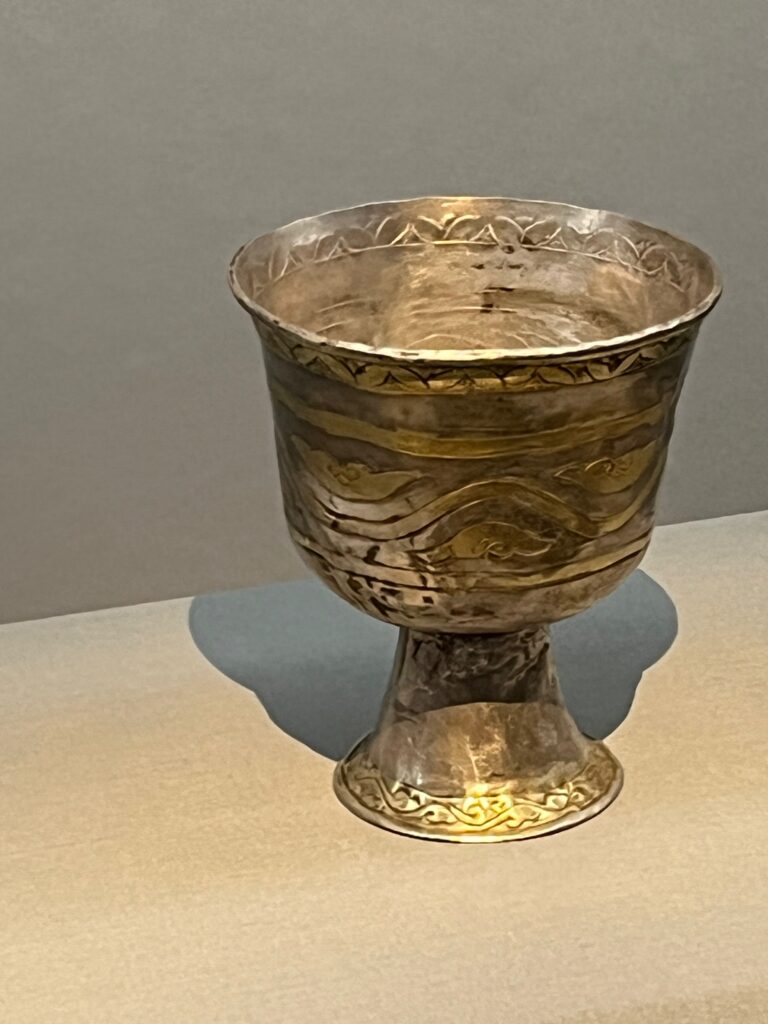
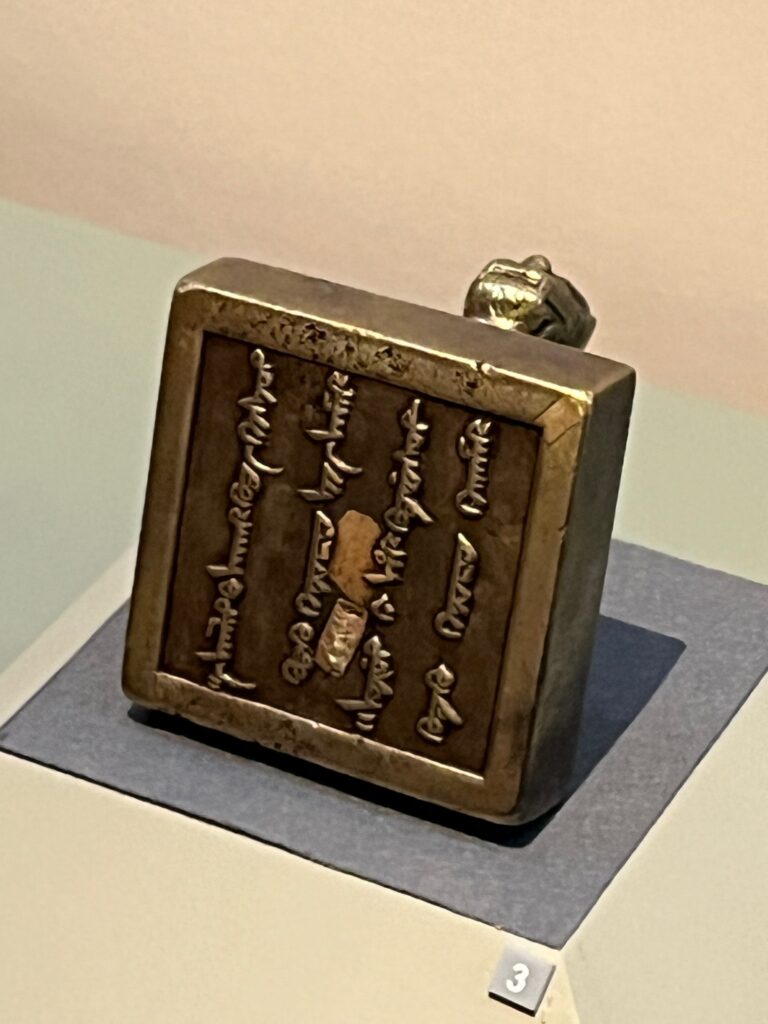
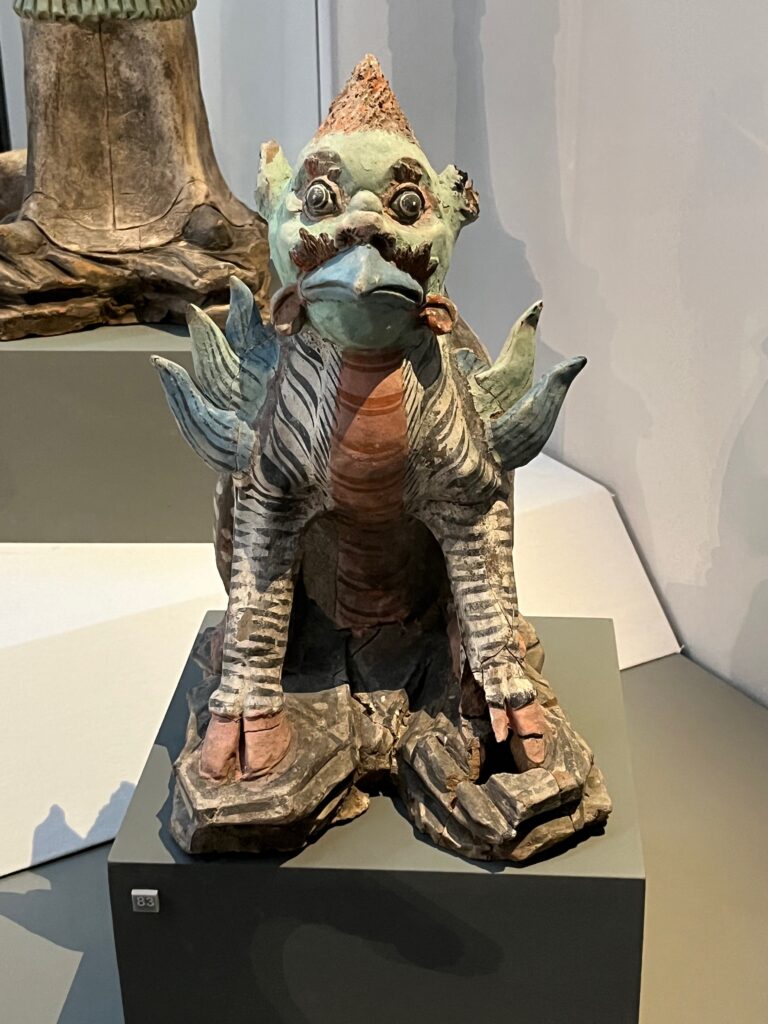
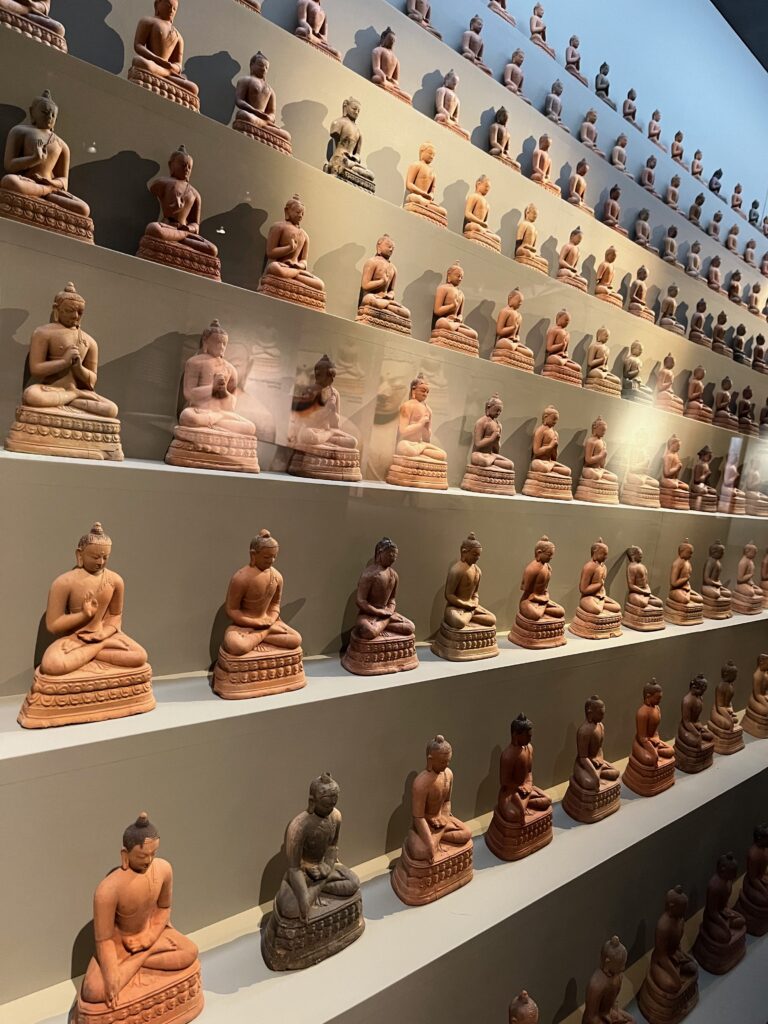
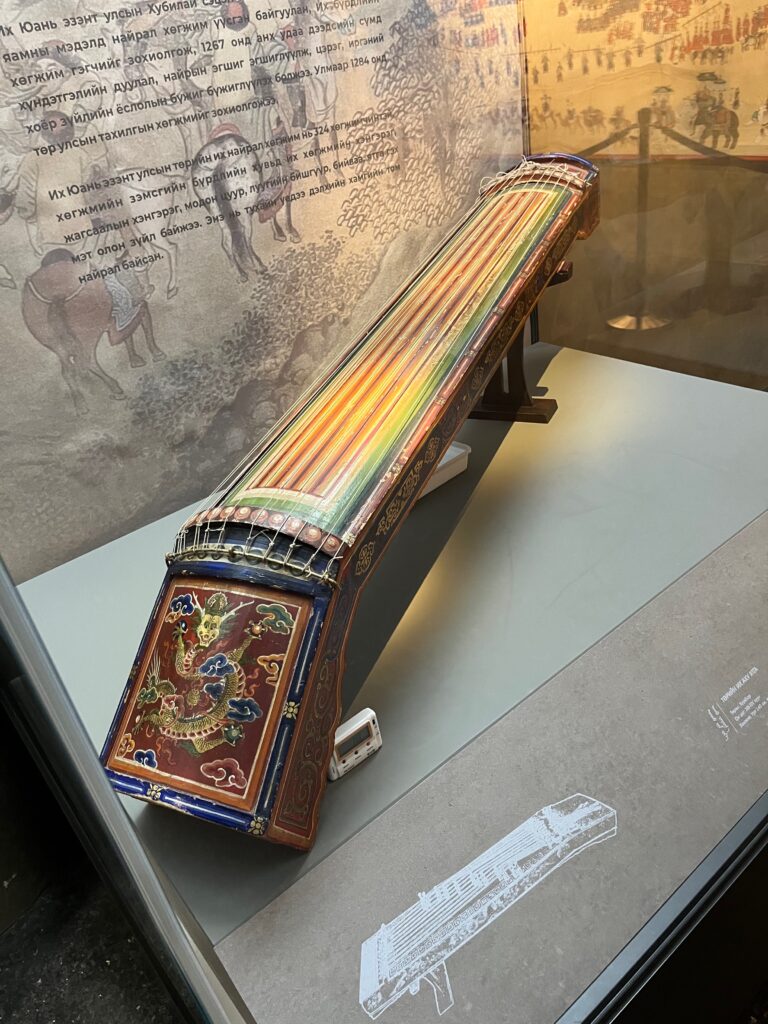
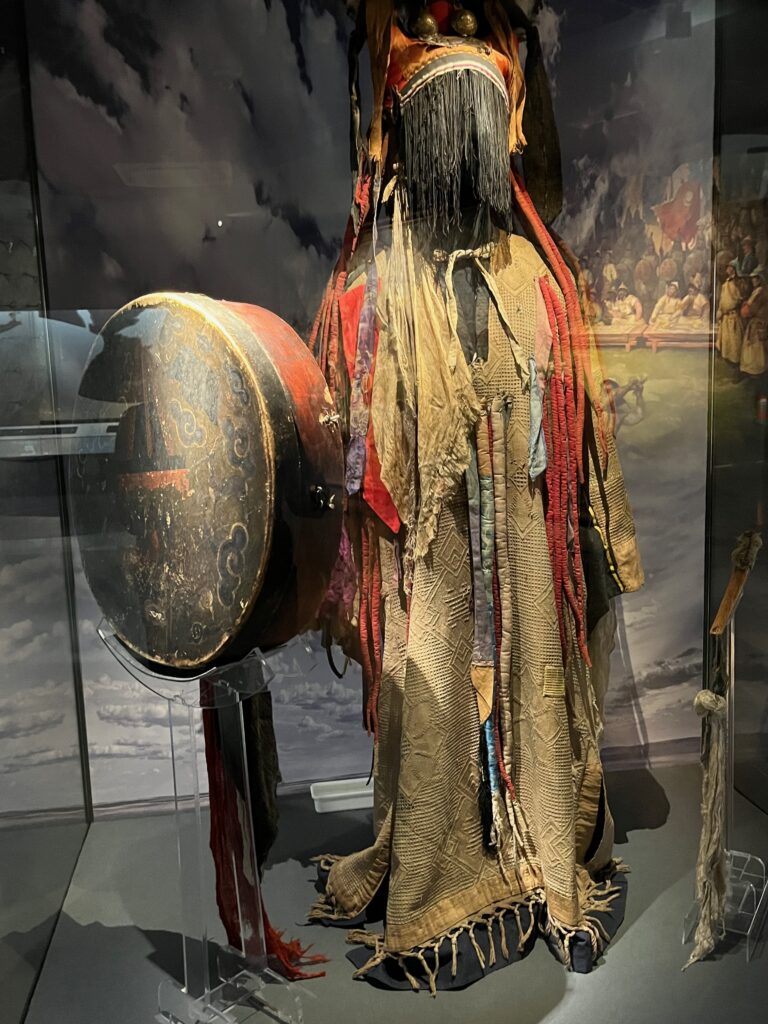

Family trees
One of the most gorgeous scenes in the museum was about genealogy and the ingenious ways family trees were represented. It was a requirement that leaders take the necessary measures to preserve their lineage in some form, and many of these were preserved here. One was a scroll that covered a thirty-foot wall from left to right; others were recognizably “family trees” akin to the ones we made in elementary school – though longer and more elaborate. Then there was this wheel-and-spoke version:
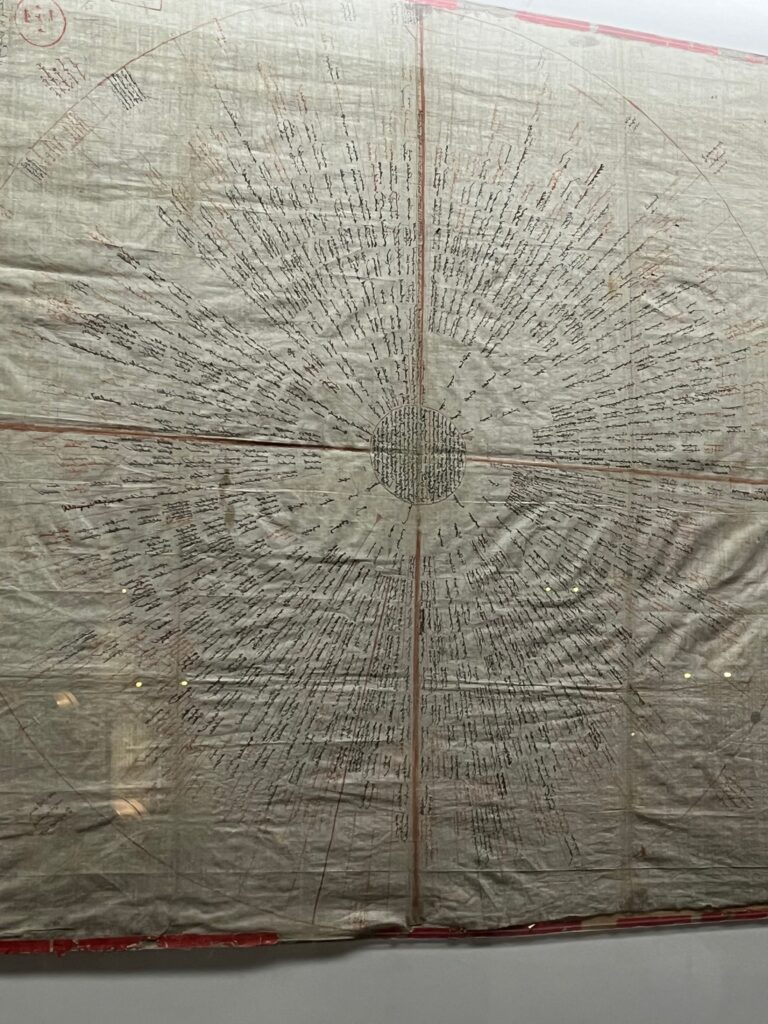
Just stunning. I don’t know if the quadrants are the four grandparents’ families, but the detail is just amazing.
Weapons included a slingshot, bows and arrows, and a catapult – plus the shaggy Cousin-It-looking thing which was carried into battle like a flag.
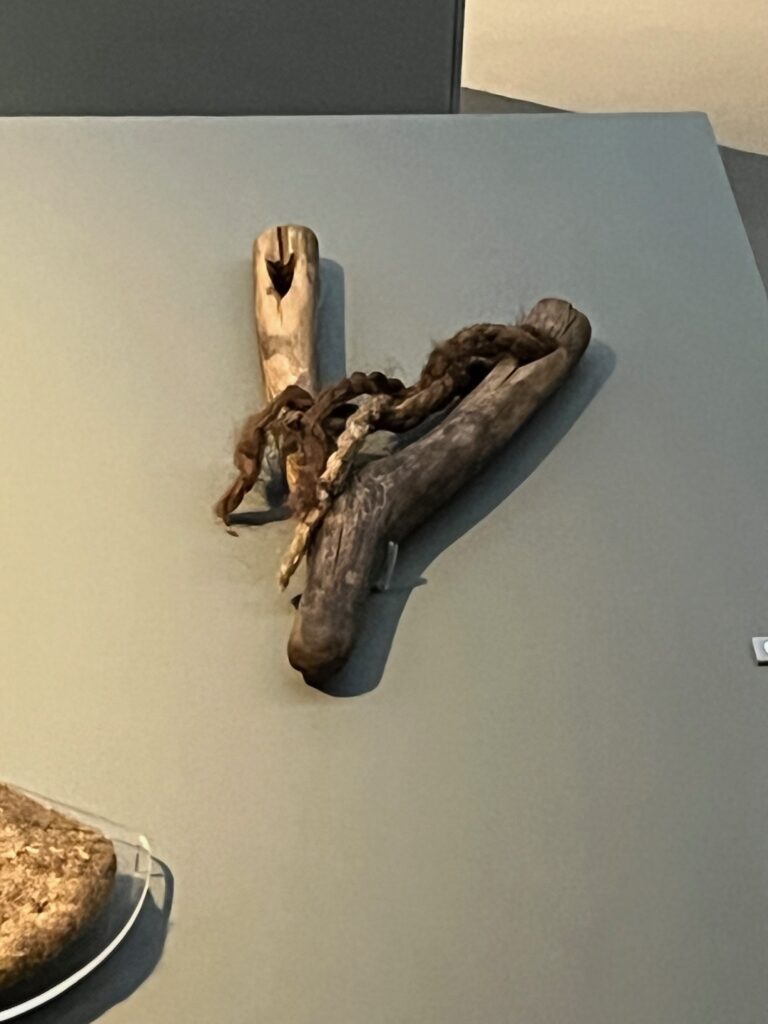
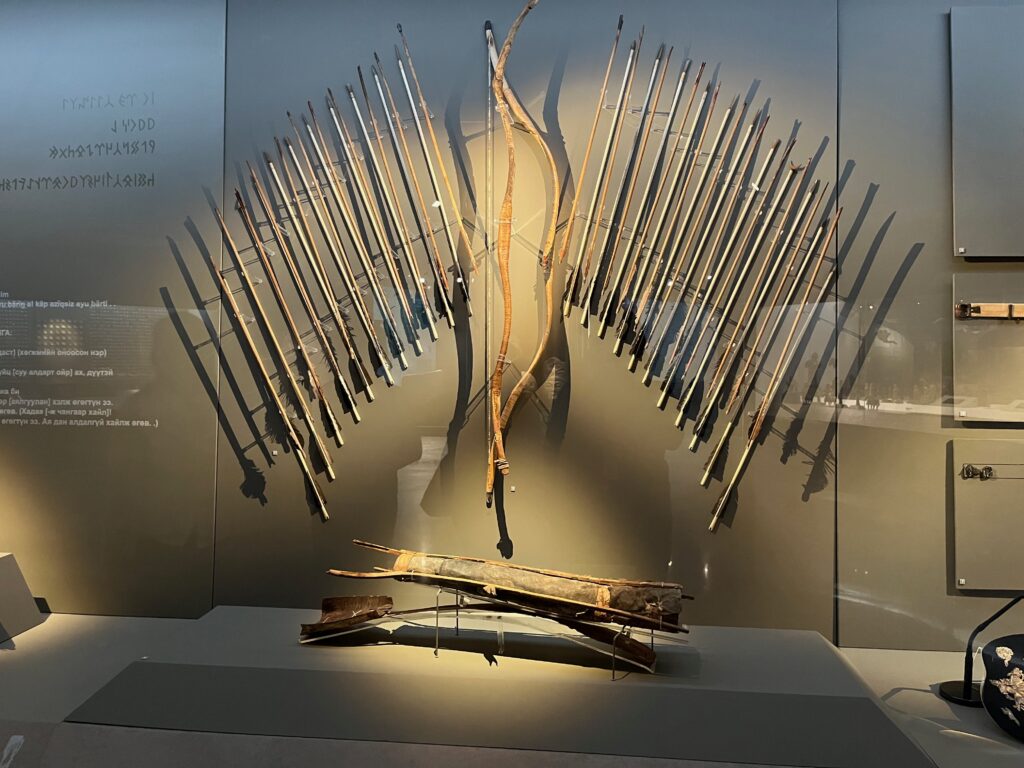
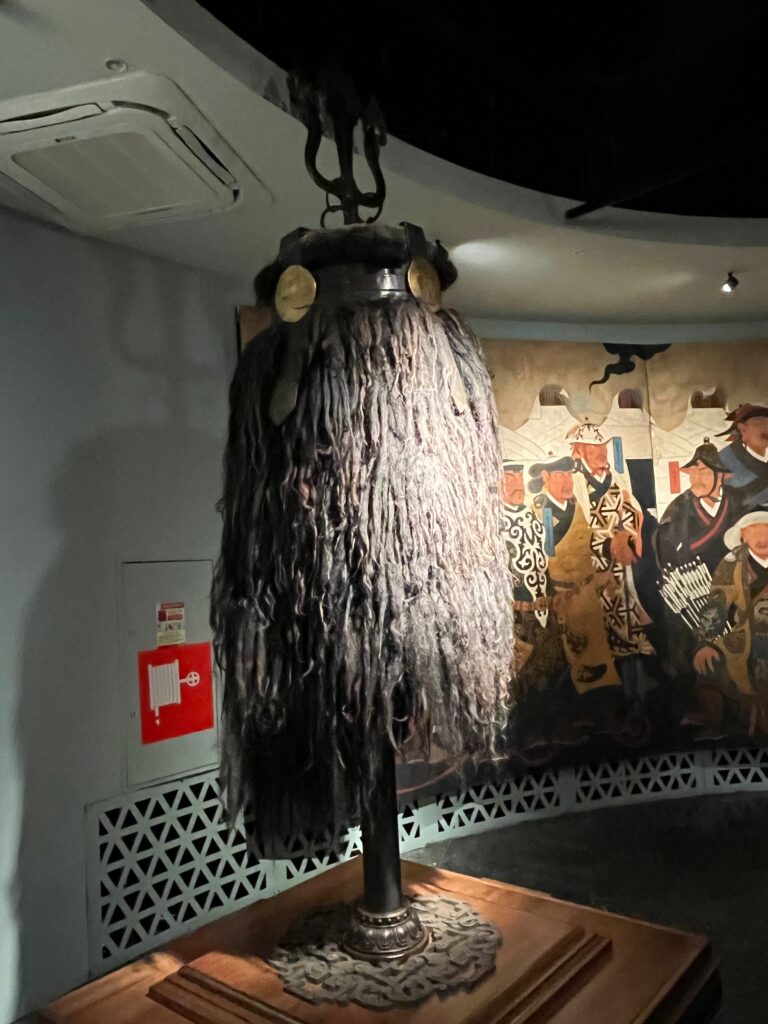
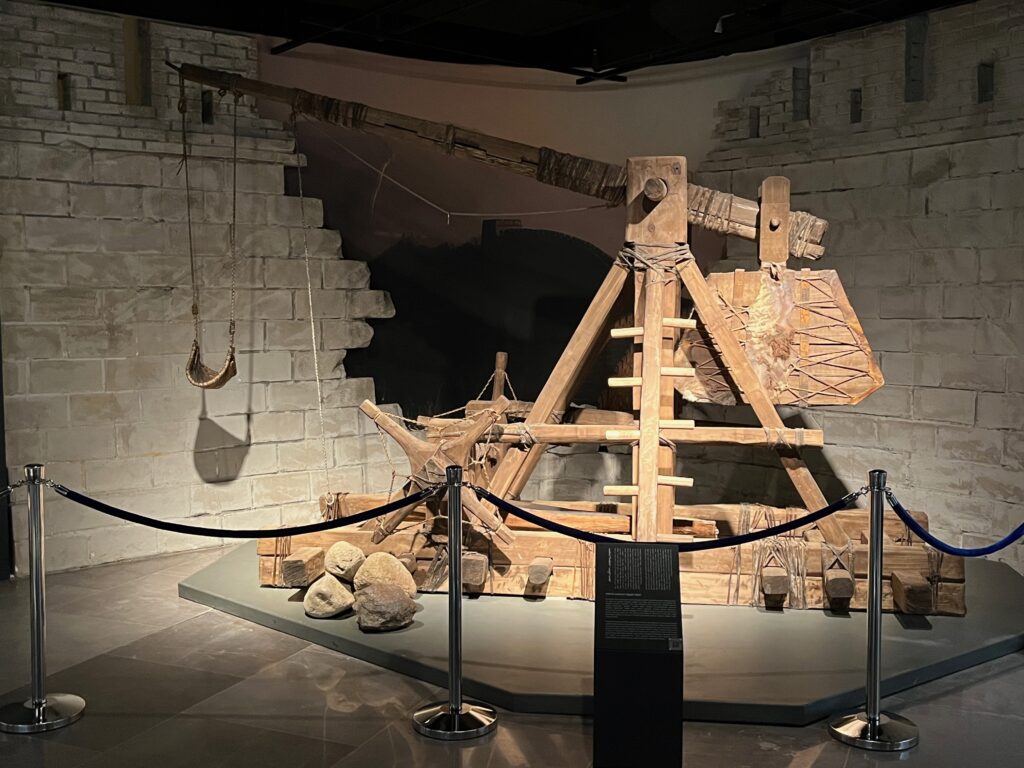
Mongolian music
On the flight to Ulanbaatar from Seoul, on Mongolian Air, all the entertainment options were in Mongolian – so I watched Mongolia’s Got Talent. It’s easy to get excited for musical talent in any language, and so many amazing singers made that last 3+ hour flight fly by. (Ahem.) Anyway, I was treated not 48 hours later to the song stylings of my van driver, on the way from the national park hotel back to the city. What a voice! I secretly recorded him but I feel bad uploading his singing onto the web – that’s for him to do if he ever wants to. But I did urge him repeatedly to go on Mongolia’s Got Talent, which he strenuously rejected while also, clearly, loving my suggestion.
He and I also discovered a shared love for The Hu. Who are The Hu? I’m so glad you asked. This is my favorite video “Bii Biyelgee” but literally any song (Wolf Totem, The Great Chinggis Khan, Yuve Yuve Yu) on their YouTube channel will floor you. Amazing metal music (and I am no metalhead) with ancient instruments and full-on gorgeous video scenery around Mongolia. They’re 300% into it. The video production is amazing. Somehow a country of only 3 million souls has produced a band heard by 100 million around the world.
Last looks
A last few pics of me, more food, and some furry friends, as my trip wound down. I don’t mind saying I’m eager to go back, but it’s also a long trip and I’m not sure how I’d explain it to my brother and sister and niece, who live in Alaska. Maybe, in fact, I can convince them to come with me!
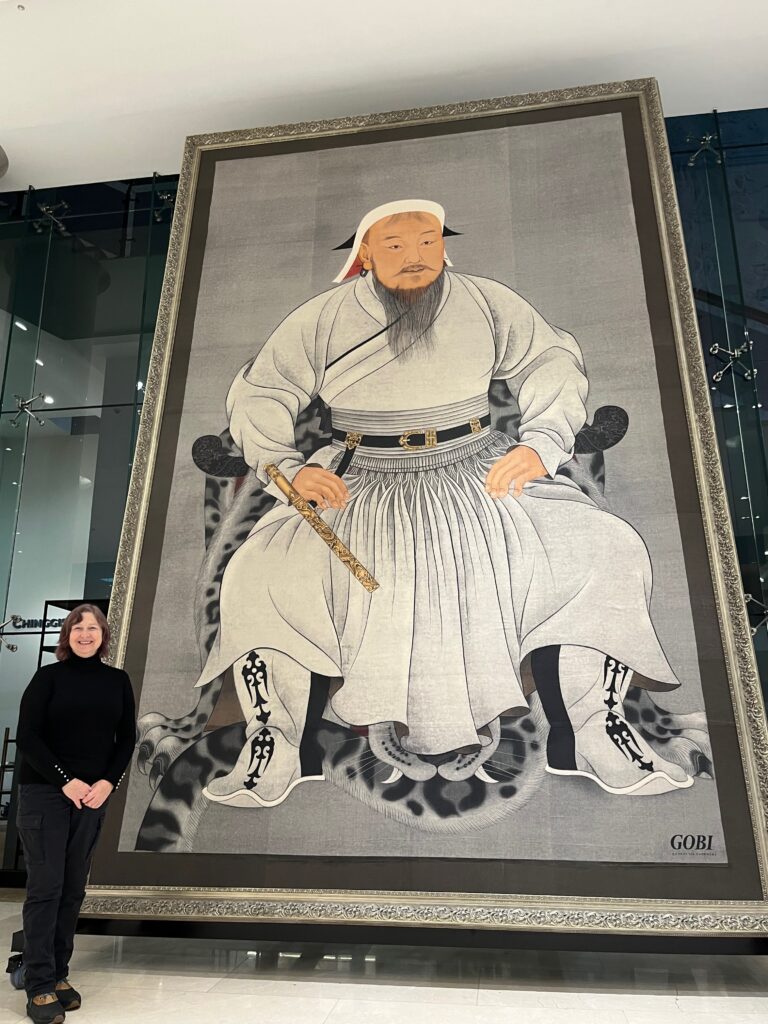
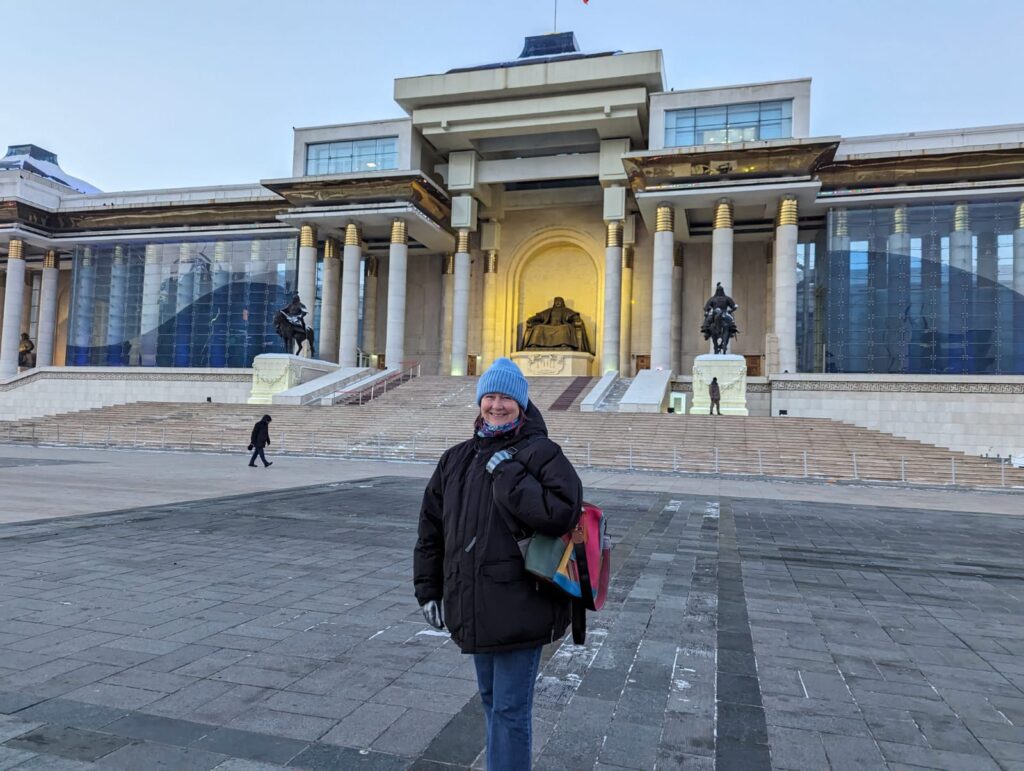
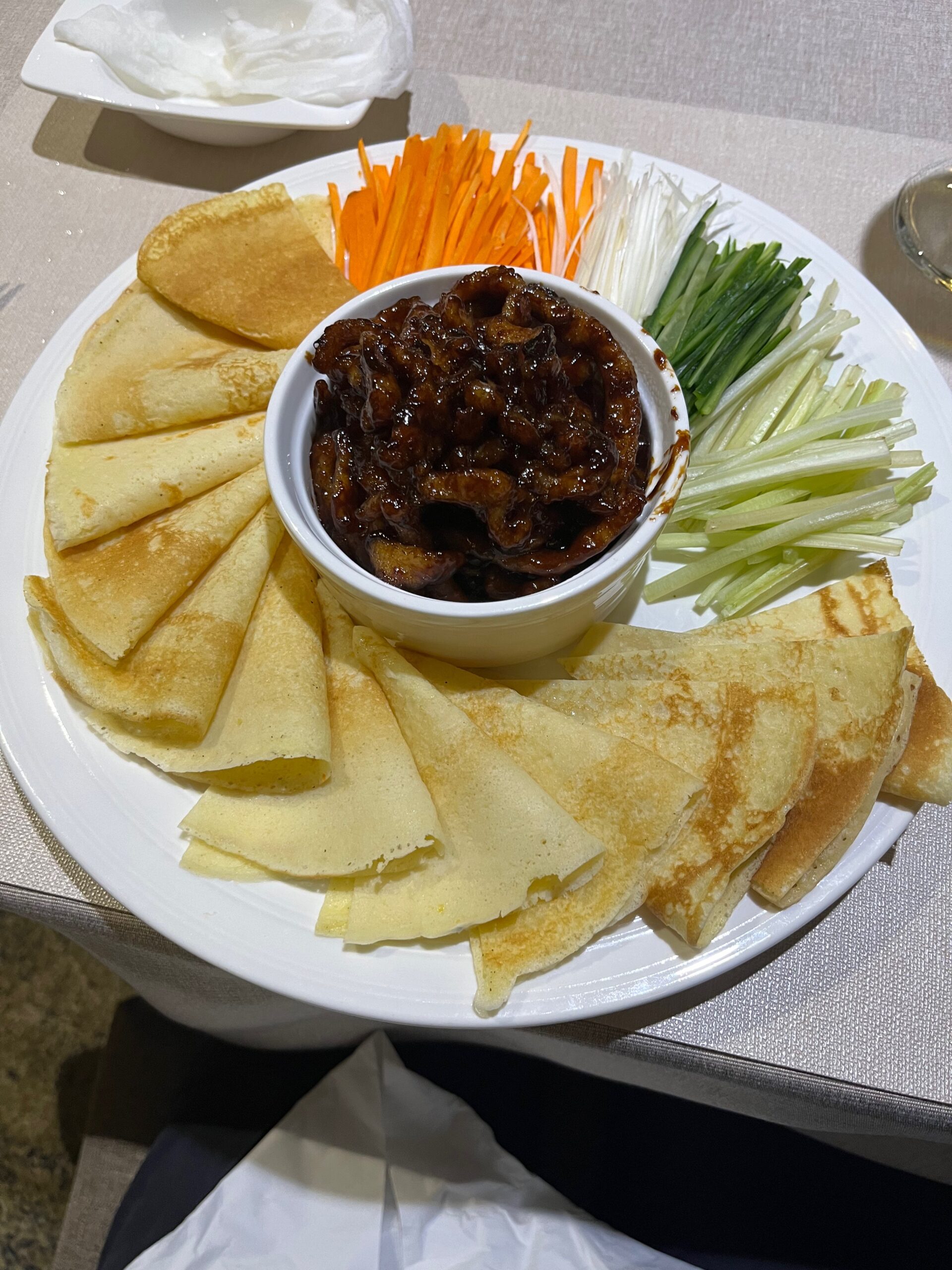
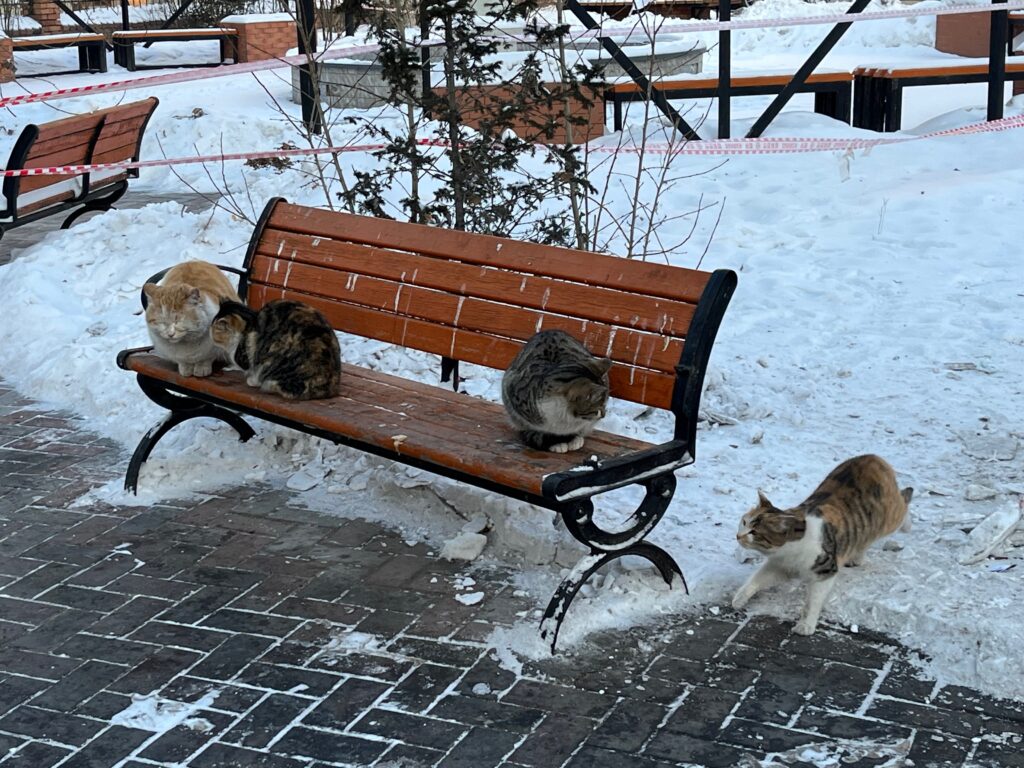
This very last set of pics is silly, but so charming. Our hotel changed out the rug in the elevator each morning so we weary travelers wouldn’t miss any appointments:
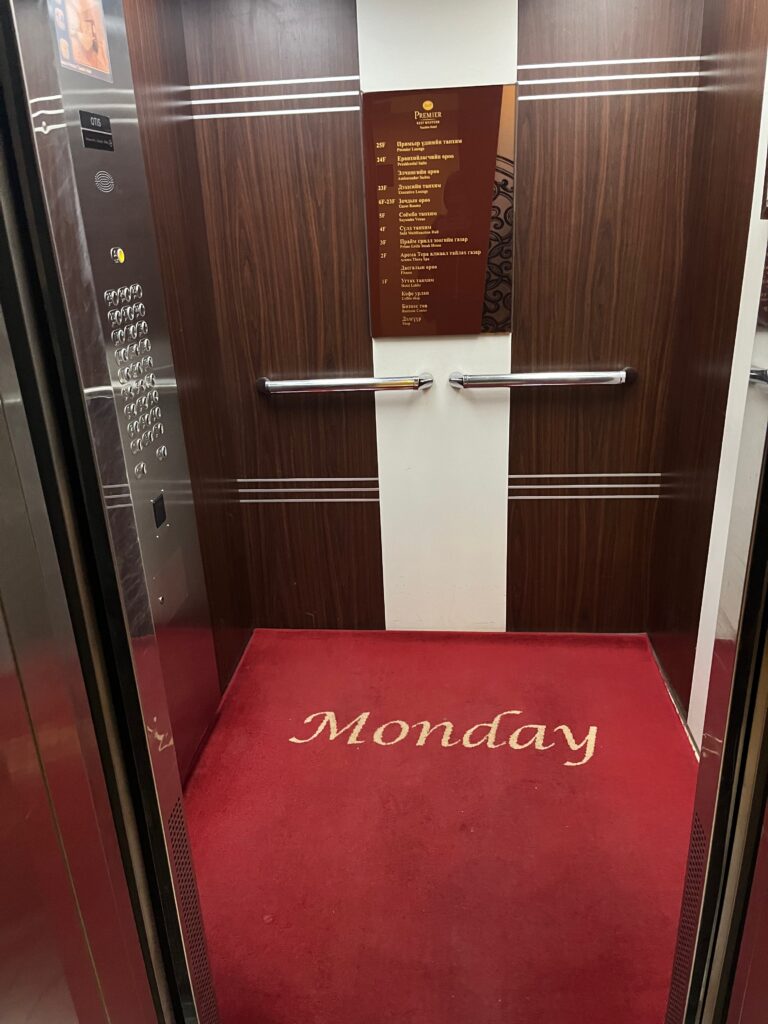
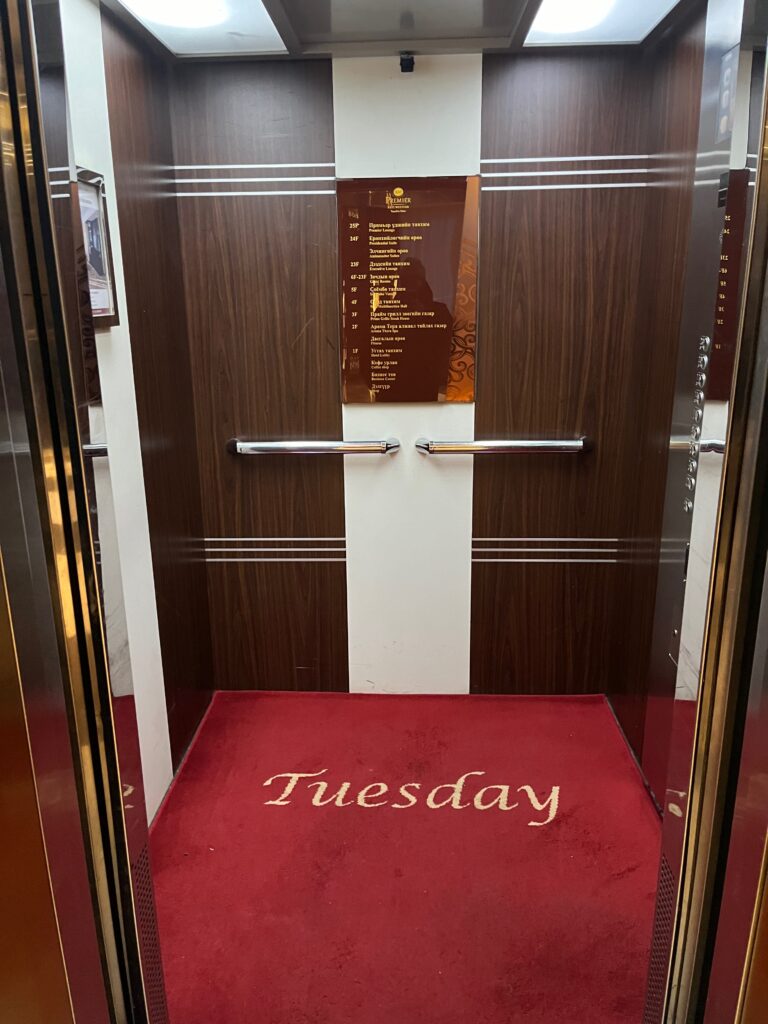
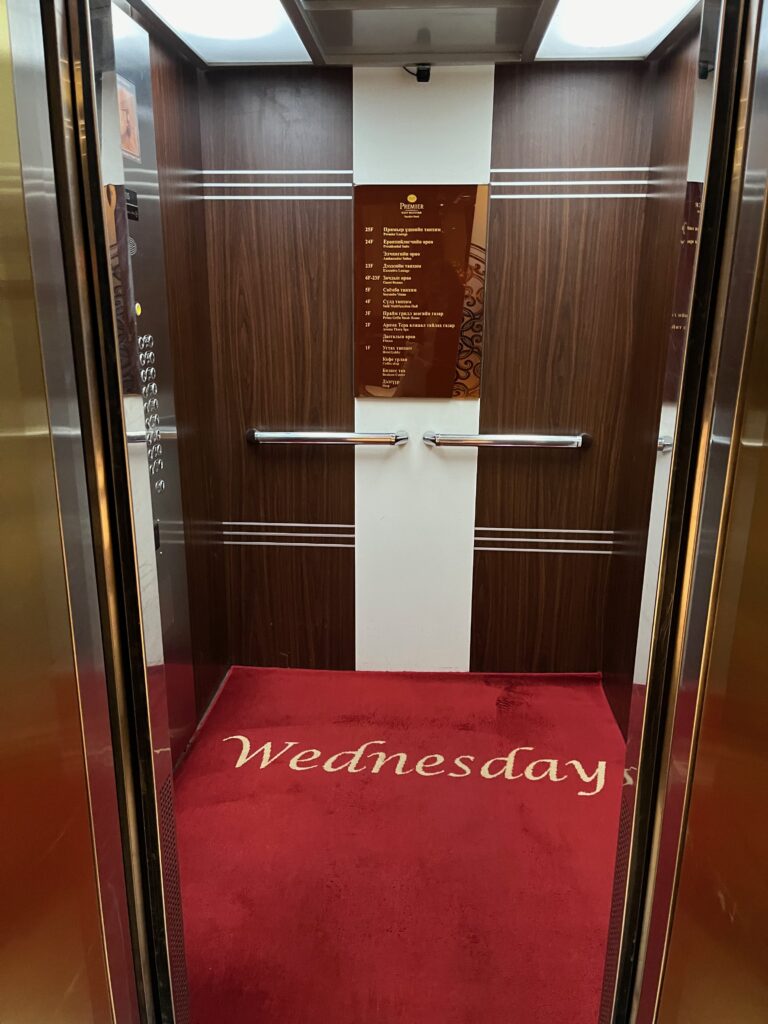
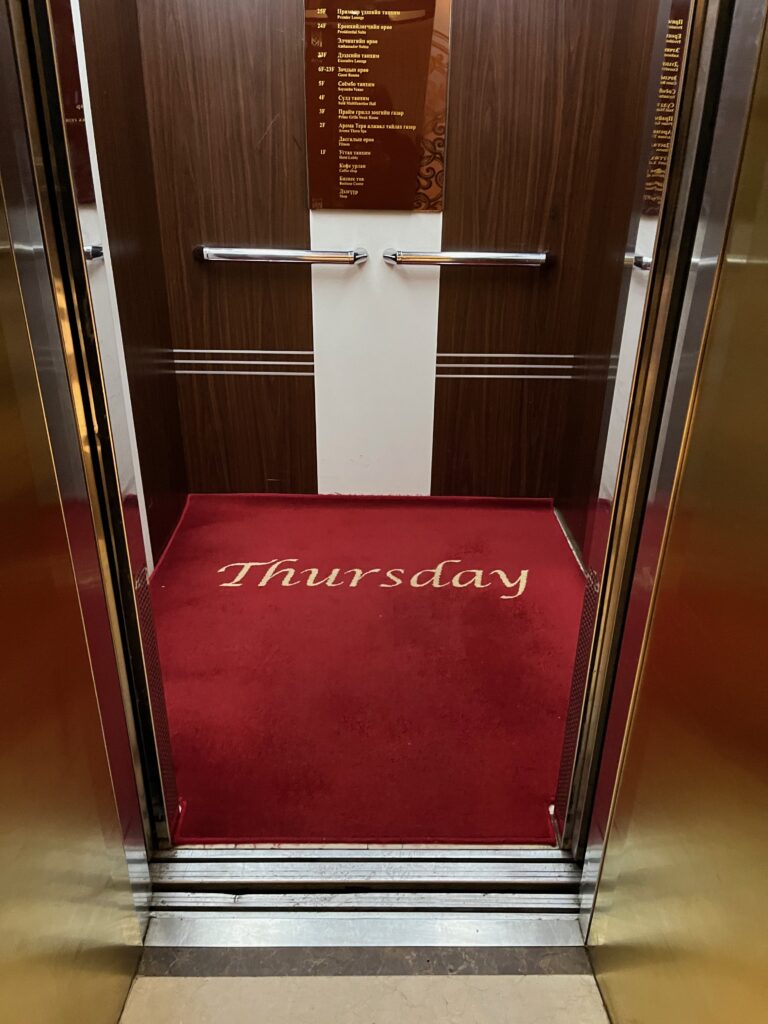
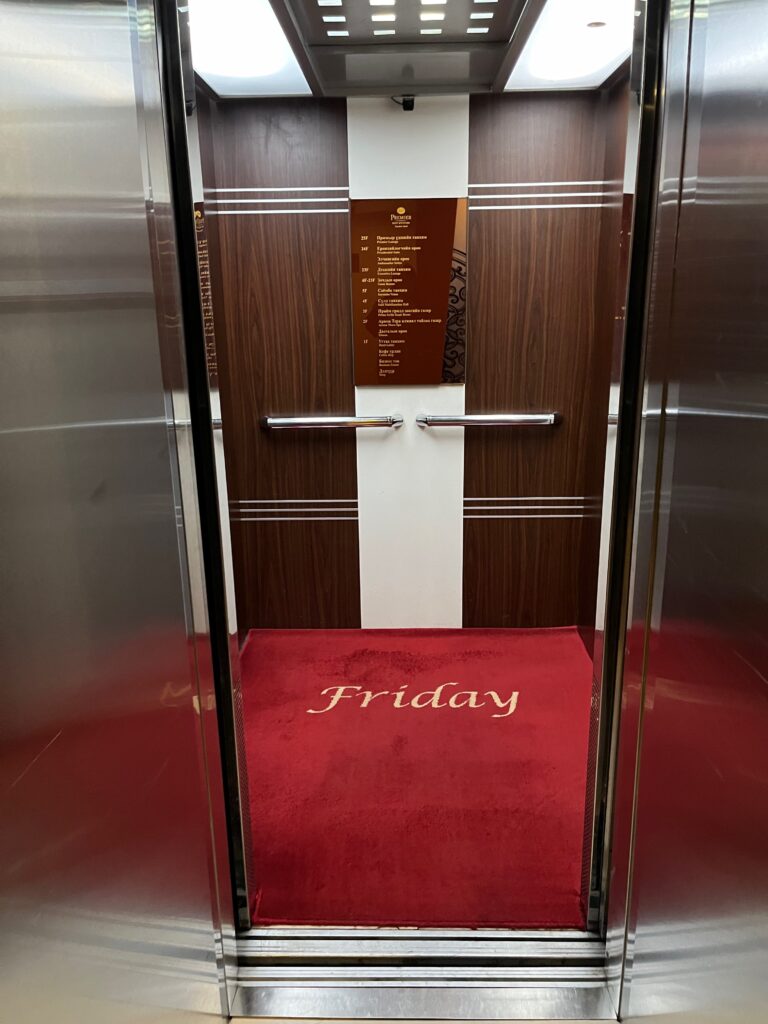
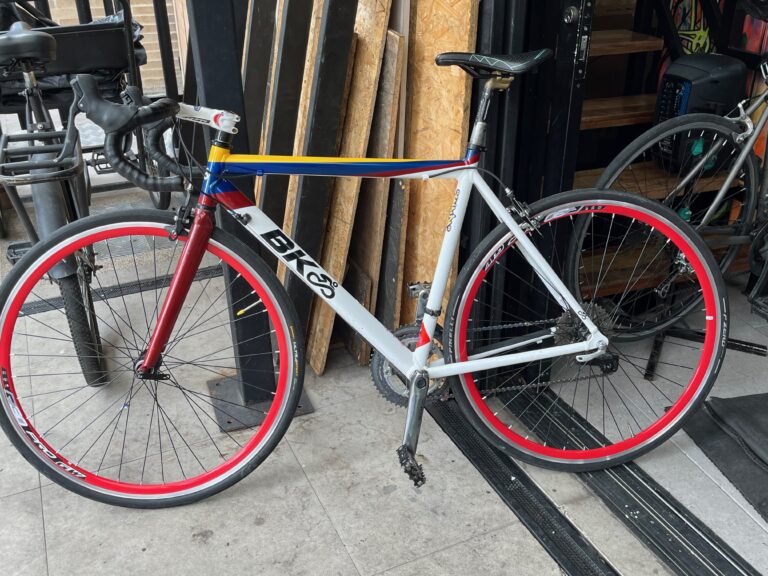

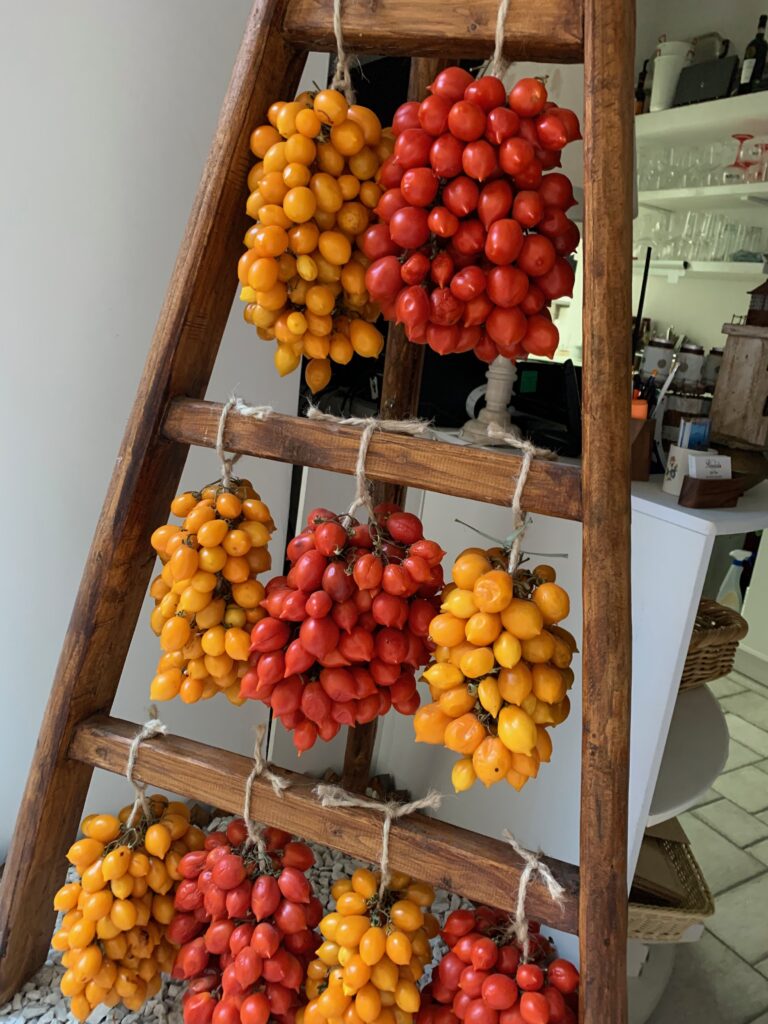
Leave a Comment